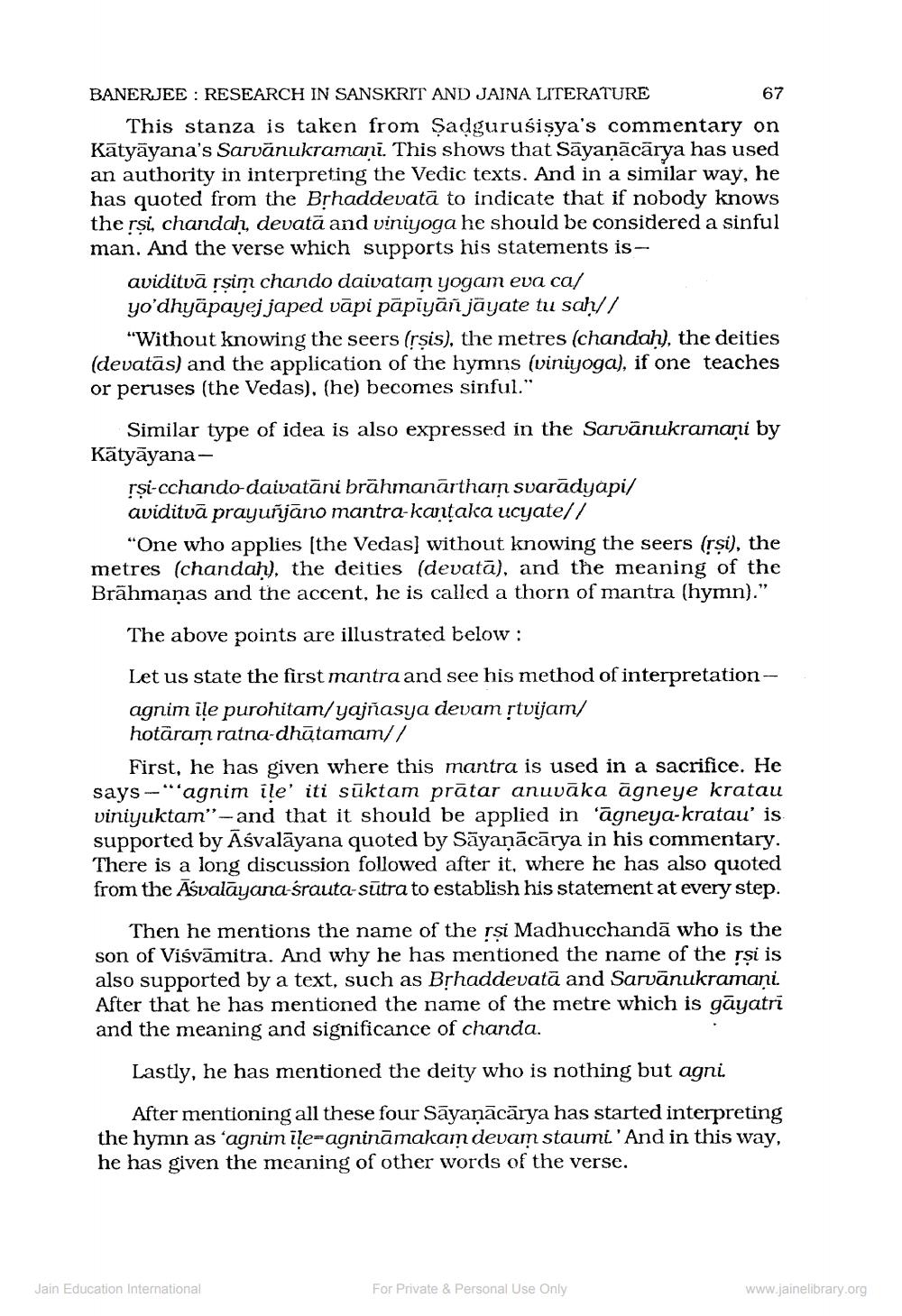________________
BANERJEE : RESEARCH IN SANSKRIT AND JAINA LITERATURE
67 This stanza is taken from Sadgurusisya's commentary on Katyāyana's Sarvänukramani. This shows that Sāyanācārya has used an authority in interpreting the Vedic texts. And in a similar way, he has quoted from the Brhaddevatā to indicate that if nobody knows the rși, chandah, devatā and viniyoga he should be considered a sinful man. And the verse which supports his statements is
aviditvā rsim chando daivatam yogam eva ca/ yo'dhyäpayej japed vāpi pāpiyās jāyate tu saħ//
"Without knowing the seers (rsis), the metres (chandah), the deities (devatās) and the application of the hymns (viniyoga), if one teaches or peruses (the Vedas). (he) becomes sinful."
Similar type of idea is also expressed in the Sarvänukramani by Kātyāyana
rsi-cchando-daivatāni brahmanartharn svarādyapi/ aviditvā prayuñjano mantra-kantaka ucyate//
“One who applies (the Vedas) without knowing the seers (rsi), the metres (chandah), the deities (devatā), and the meaning of the Brāhmaṇas and the accent, he is called a thorn of mantra (hymn)."
The above points are illustrated below :
Let us state the first mantra and see his method of interpretationagnim ile purohitam/yajñasya devam ștvijam/ hotāram ratna-dhūtamam//
First, he has given where this mantra is used in a sacrifice. He says - "agnim ile' iti sūktam prātar anuvāka āgneye kratau viniyuktam"- and that it should be applied in 'āgneya-kratau' is supported by Aśvalāyana quoted by Sāyanācārya in his commentary. There is a long discussion followed after it, where he has also quoted from the Asvalāyana-srauta-sūtra to establish his statement at every step.
Then he mentions the name of the rsi Madhucchandā who is the son of Viśvāmitra. And why he has mentioned the name of the rsi is also supported by a text, such as Brhaddevatā and Sarvānukramani After that he has mentioned the name of the metre which is gāyatri and the meaning and significance of chanda.
Lastly, he has mentioned the deity who is nothing but agni.
After mentioning all these four Sayanācārya has started interpreting the hymn as ‘agnim ile-agnināmakam devam staumi.' And in this way, he has given the meaning of other words of the verse.
Jain Education International
For Private & Personal Use Only
www.jainelibrary.org




